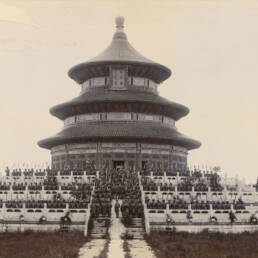How Armenian immigrants influenced the Bengal delicacy
- History
- Culture
- Music
In every Bengali kitchen, “Potol-er Dorma” is a delicacy. The remarkable journey of the dish that tells an exciting story of cosmopolitan Calcutta and a landmark immigration.
Readers who have experienced Mediterranean or Balkan cuisine before may have already been aware of the Turkish delicacy Dolma, a family of stuffed dishes mostly served as an appetizer.
Dolma is Turkey’s national dish, where traditionally grape leaves are stuffed with rice and ground meat. The word dolma comes from dolmark in Turkish, which means ‘to be stuffed’.
However, there is an age-old debate between the Turks, Greeks and Armenians on the origin of Dolma. Armenians believe this is their heritage, and word
‘Tolma’ came from Toli, the ancient Urartian word for grape leaves.
When the Armenians arrived in India and Calcutta in the 16th century to escape Turkish persecution, they also brought a new blend of culture. The recipe of Dolma was one of those culinary customs that made its way to Calcutta.
What everyone may not know, Armenia is the land of ancient winemaking, the land of the vineyards. There are 100 different indigenous Armenian grape varieties. In Calcutta as well, the Armenian merchants grew grapevines in their house gardens.
With the advent of cultural exchange between the migrant Armenians and the native Bengalis, a new form of Bengali dish was formed taking inspiration from the Armenian dolmas – the quintessential ‘Potol-er Dorma’.
“Potol-er Dorma” or stuffed pointed gourd became a delicacy in Bengali households soon. Fish and prawn are popular non-vegetarian choices for fillings, while, paneer, lentil or coconut stuffing became vegetarian alternatives.
Migration often recounts tales of wonder and terror. Humble Potol-er Dorma is one of the joyful ones to remember.
Sources
- Goya.in
- Indian Express
- Wikimedia







